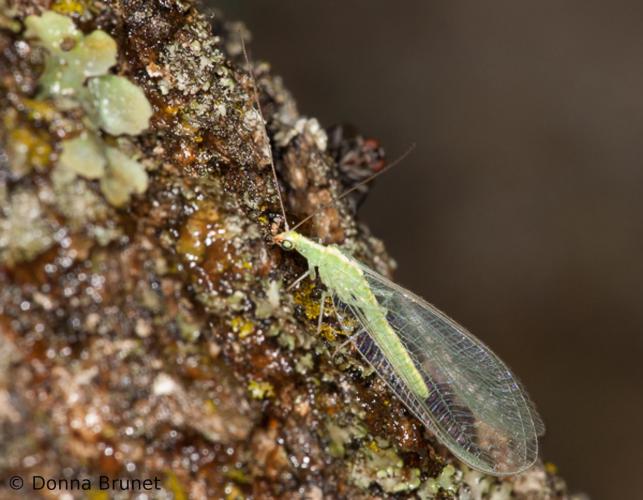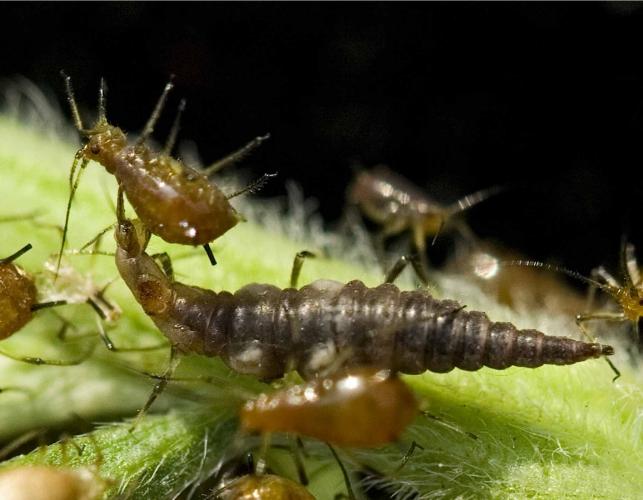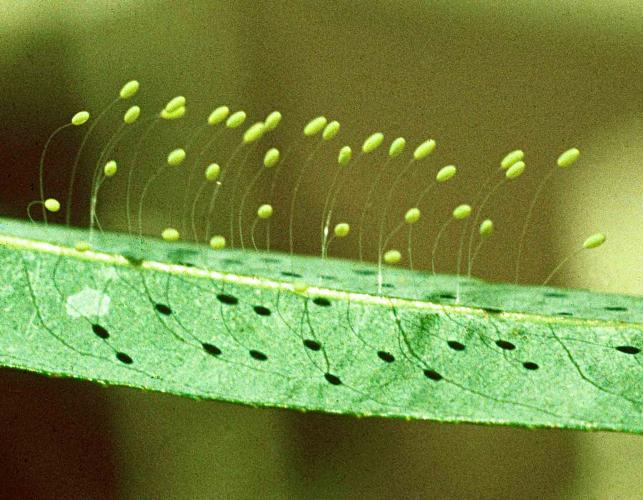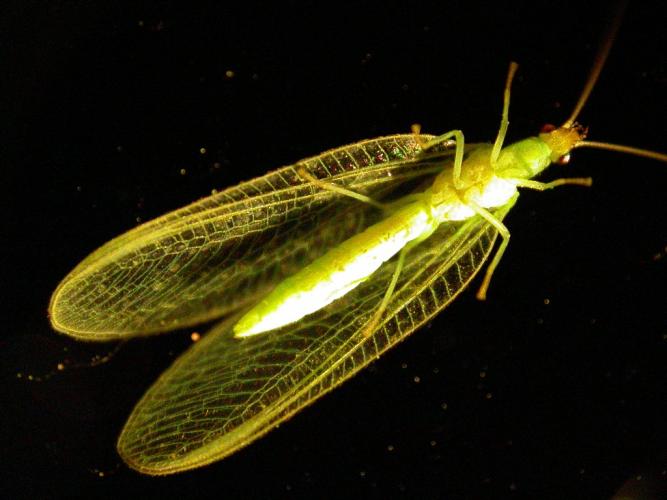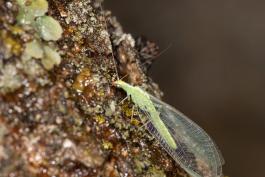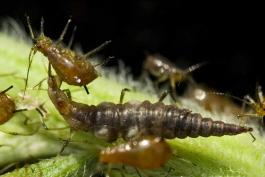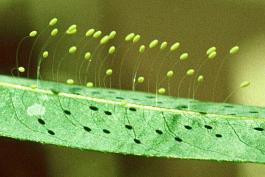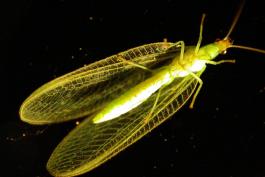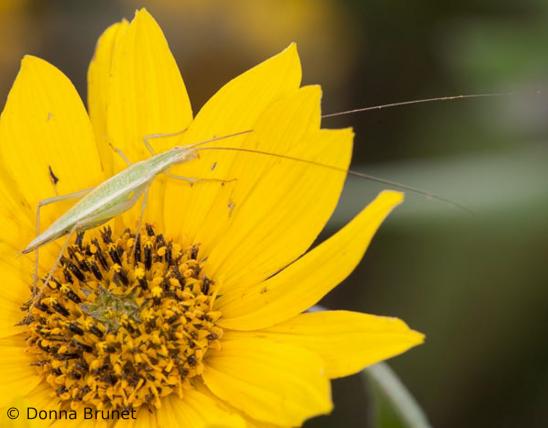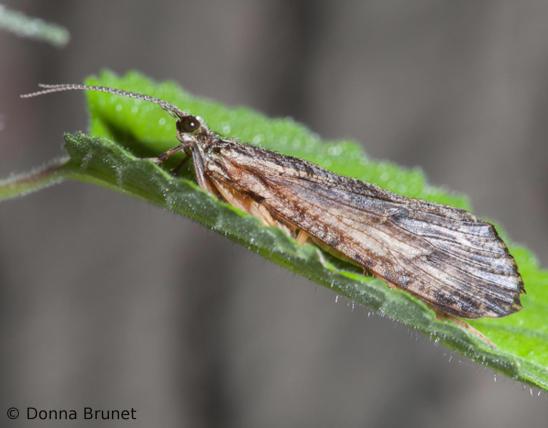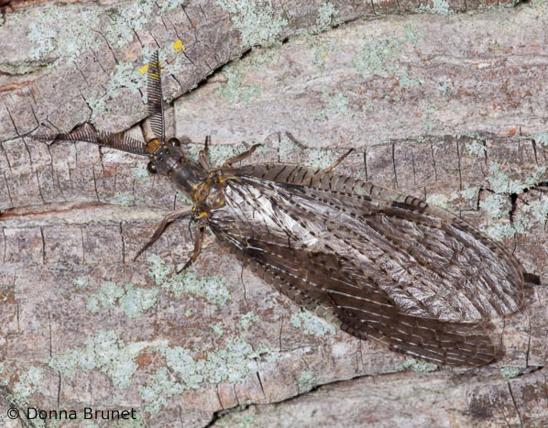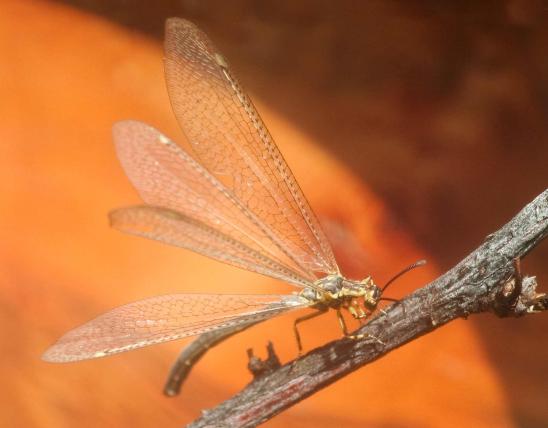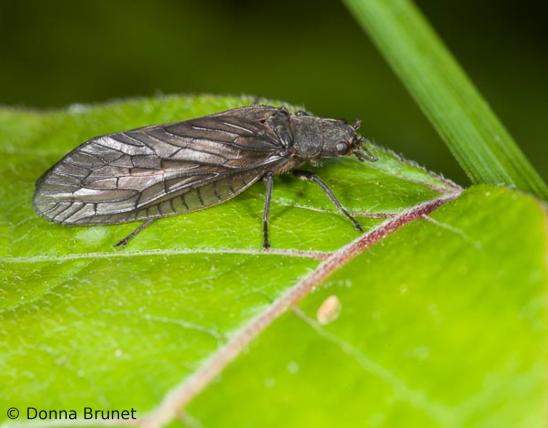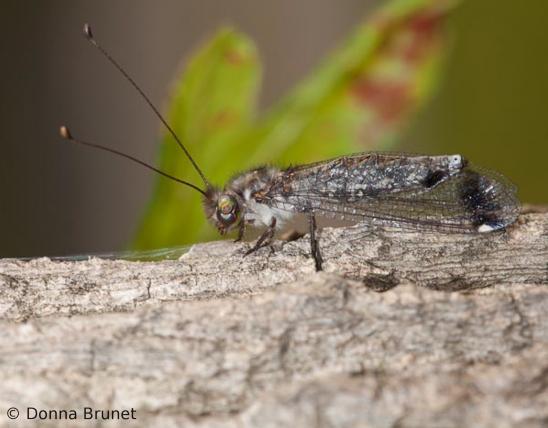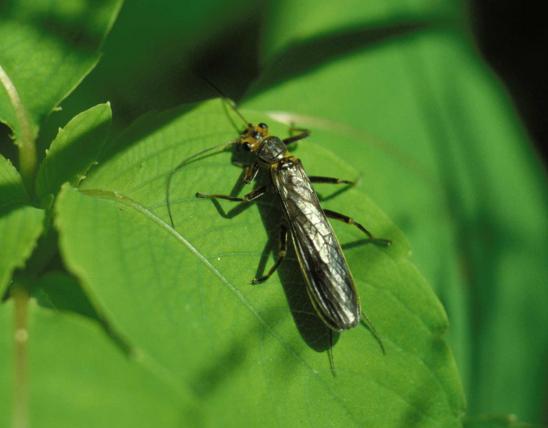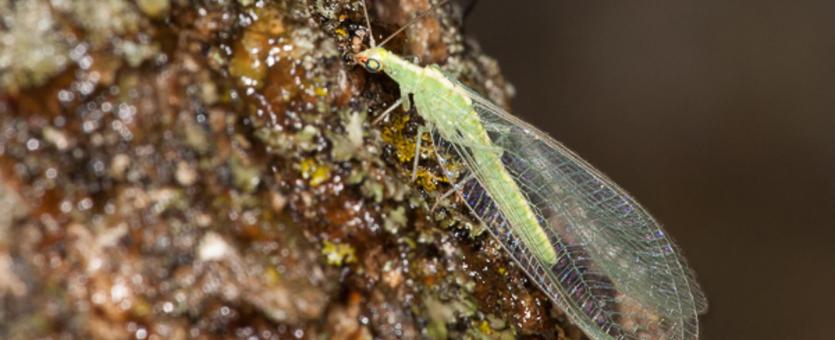
Adult green lacewings have soft, narrow bodies with four delicately veined, lacy-looking wings that fold rooflike over the body when at rest. They are most commonly pale green, but some species are tan or brown. The eyes are coppery or golden. The antennae are long and threadlike. Flight is fluttery and slow. When handled, they can emit a foul odor.
Larvae are long, flattened, segmented, and lizard-like, with six legs. Impressive, sickle-shaped mandibles constitute the mouthparts. Larvae usually have camouflage patterns in gray, tan, and brown, and usually have small bristles on their bodies. Some species decorate their backs with debris for additional camouflage. At least one species glues deflated aphid skins onto its back.
Length: to ½ inch; varies by species.

Statewide.
Habitat and Conservation
Lacewings are usually found in openings around grassy areas, weedy roadsides, shrubs, and other vegetation. They are least active during the day, resting in vegetation, and come out around sunset. Like many flying insects, the adults are attracted to lights at night. Look for larvae wherever there are aphids. Cocoons are round, white, silken cases attached beneath leaves.
Food
The larvae, sometimes called aphid lions, are insatiable predators of other insects, especially aphids. A lacewing larva grasps the aphid with its grooved, caliper-shaped jaws, often lifts it up in the air, then drinks the fluids in the aphid’s body. A single lacewing larva can eat an aphid a minute, for hours, and not slow down. Adult lacewings of some species are predatory, too; others eat pollen from flowers or honeydew, the sweet, processed plant sap that is excreted by aphids.
Status
Common.
Life Cycle
Egg-laying is usually in early evening. The female touches the tip of her abdomen onto a twig or other surface and pulls away, creating a threadlike strand that instantly hardens, then lays an egg at the top. These stalked eggs are unique to lacewings, helping protect them from predators (including each other). Larvae cut a tiny lid from the egg case, emerge, and begin eating immediately. After 1-2 months, they form a cocoon and emerge as winged adults. There are several broods per year.
Human Connections
Lacewings are efficient, insatiable predators of aphids, so they are beloved by farmers and gardeners. Many people appreciate their delicate wings, shiny golden eyes, and odd, stalked egg cases. Sadly, many lacewings are killed by bug zappers and other indiscriminate pest-control measures.
Ecosystem Connections
As predators, lacewings play a major role in controlling the numbers of aphids, whose populations can quickly get out of hand. Lacewings are preyed upon by many other creatures, including small parasitic wasps that lay eggs on lacewing cocoons, and whose larvae then eat the defenseless lacewing.
